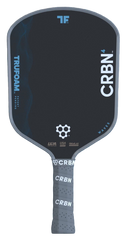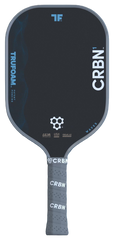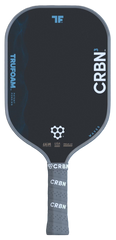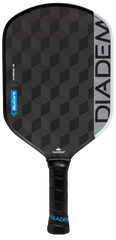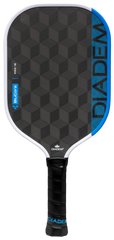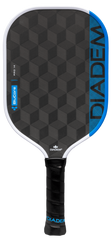In the dynamic realm of pickleball, mastering your backhand can truly transform your game. A powerful backhand not only enhances your overall performance but also adds a layer of strategic depth to your play on the court.
This guide will delve into the essentials of the backhand shot, highlighting key techniques to refine your skills, common mistakes to avoid, and expert tips for improvement.
Regardless of whether you are a beginner or someone aiming to polish your technique, you will discover valuable insights to help elevate your game.
What is a Backhand Shot in Pickleball?
A backhand shot in pickleball is a stroke performed with the back of the hand directed toward the ball. This is an essential skill that can significantly impact your performance on the court.
By understanding the nuances of this technique, players can greatly improve their shot selection, leading to increased power, spin, and control during gameplay.
To master the backhand shot, it is crucial to establish a solid foundation in the fundamentals, which include proper grip, stance, and body mechanics.
Why is a Strong Backhand Important in Pickleball?
A strong backhand in pickleball is essential for maintaining consistency and improving overall performance during competitive play, as it significantly influences game strategy.
This stroke enables players to engage effectively in rallies while also expanding their shot variation, allowing for greater accuracy in placing shots around the court.
Whether in doubles or singles play, a dependable backhand assists in reading opponents' movements and creating opportunities for tactical plays.
What are the Key Techniques for a Good Pickleball Backhand?
To develop an effective backhand in pickleball, it is essential to master key techniques such as grip, footwork, swing, and follow-through. Each of these components plays a crucial role in the overall mechanics of the shot, impacting power, accuracy, and control.
By concentrating on these fundamental techniques, players can enhance their backhand, resulting in improved shot placement and greater success during matches.
1. Grip
The grip is a crucial element of the backhand shot in pickleball, as it significantly impacts your control and shot placement with the paddle. An optimal grip enables players to execute shots with precision and can greatly affect the spin and power of the ball. By understanding how to adjust your grip based on the playing conditions, you can enhance your effectiveness during competitive play.
There are different grip styles, such as the Eastern, Western, and Continental grips, and each imparts unique characteristics to the execution of the backhand. For example, the Eastern grip often provides greater control over flat shots, while the Western grip, which features a more closed face, facilitates enhanced topspin and dynamic ball placement. The Continental grip, on the other hand, is a versatile option that allows players to transition smoothly between various shots.
Ultimately, how a player grips the paddle can determine not only the direction and depth of the shot but also the amount of spin applied, which can lead to tactical advantages on the court.
2. Ready Position
Adopting the proper ready position is crucial for executing a successful backhand shot in pickleball, as it lays the groundwork for effective footwork and movement. A stable stance enables players to react swiftly to the ball, ensuring they are well-prepared for the upcoming shot. By maintaining an athletic posture, players can enhance their timing and rhythm, which ultimately improves their overall performance on the court.
When individuals position their feet slightly shoulder-width apart and bend their knees, they establish a solid base that promotes agility. This athletic stance not only supports quick acceleration toward the ball but also facilitates smoother lateral movements, which are essential during intense matches.
Being in a state of readiness instills confidence in players, making them feel equipped to handle any shot that comes their way. In the end, mastering this ready position significantly impacts the effectiveness of their shots and enhances the enjoyment of the game by allowing for quicker, more precise responses.
3. Footwork
Effective footwork is essential for executing a strong backhand in pickleball, as it enables players to position themselves correctly for optimal shot execution. Good footwork promotes smoother movement on the court, allowing players to react quickly to their opponent's shots while maintaining balance during swings. Engaging in specific drills can greatly enhance footwork, leading to improved positioning and overall performance.
To maximize their backhand potential, athletes should focus on developing agility and precision in their movements. Incorporating lateral movement drills, such as side shuffles or crossover steps, is beneficial for reinforcing the muscle memory required for quick repositioning. Practicing footwork patterns like the 'V' or the 'T' can also sharpen one's ability to pivot and shift weight effectively.
Participating in these targeted exercises not only strengthens the lower body but also enhances the overall awareness and anticipation needed during intense match situations. Ultimately, improving footwork can significantly elevate performance levels, allowing players to execute backhands with increased control and consistency.
4. Swing
The swing technique is an essential aspect of the backhand shot in pickleball, significantly impacting both accuracy and power. By employing proper body mechanics during the swing, players can enhance the efficiency of their stroke, leading to improved shot placement and control. Focusing on the mechanics of the swing can result in considerable enhancements in overall backhand performance, making it a crucial area for practice.
To execute an effective backhand, players should begin by positioning their feet shoulder-width apart, with a slightly bent knee posture to improve stability and balance. As they prepare to strike, the non-dominant hand should guide the paddle, while the core engages to initiate the rotational movement. Utilizing the hips to pivot toward the target facilitates a smooth transfer of energy from the lower body to the upper body, thereby increasing the power of the shot.
Additionally, it is vital to follow through with the swing, allowing for an extended range of motion that contributes to improved accuracy. This follow-through can result in more precise and dynamic backhand shots.
5. Follow-through
The follow-through is often an overlooked yet vital aspect of executing a successful backhand in pickleball. It plays a crucial role in shot selection and control. A proper follow-through ensures that the energy generated during the swing is effectively transferred into the shot, thereby enhancing both accuracy and consistency. By concentrating on your follow-through technique, you can significantly improve your backhand performance.
When players overlook this essential component, they may struggle with precision and power, which can lead to missed opportunities on the court. Additionally, a player’s ability to maintain balance and rhythm throughout the swing is influenced by this critical aspect, facilitating better shot placement against opponents.
A well-executed follow-through not only sharpens overall performance but also fosters confidence in executing various backhand shots, whether one prefers a deep groundstroke or a sharp angle. Therefore, incorporating deliberate follow-through practices into training routines can lead to noticeable improvements during matches, making it an essential focus area for anyone serious about enhancing their game.
What are Common Mistakes to Avoid in a Pickleball Backhand?
Avoiding common mistakes in your backhand technique is crucial for enhancing your overall performance in pickleball. Even minor errors can result in unforced mistakes during play.
Many players tend to struggle with fundamental principles like grip and footwork, which can significantly impact their effectiveness on the court. By seeking coaching or feedback from experienced players, you can identify and address these issues, ultimately improving your game.
1. Not Using the Correct Grip
Using the incorrect grip is one of the most prevalent mistakes players make when attempting a backhand in pickleball. This misstep often leads to a significant lack of control and consistency in their shots. The grip influences everything, from shot power to spin, and having the proper grip can help stabilize the paddle throughout the swing. It is essential to understand how to adjust your grip according to your unique playing style for meaningful improvement.
When a player chooses the wrong grip, it frequently results in mishits or unpredictable ball trajectories, making it difficult to execute effective backhand shots. This loss of precision can be quite frustrating and may impact their overall performance on the court.
Adjusting the grip not only enhances stability but also provides better shot placement and increased spin potential, both of which are critical for outmaneuvering opponents. Whether opting for a continental or eastern grip, finding the right fit can elevate a player’s game, leading to more reliable and powerful shots that can truly make a difference during tight matches.
2. Standing Too Close to the Ball
Standing too close to the ball when attempting a backhand shot is a common mistake in pickleball that can lead to poor execution and positioning issues. Proper footwork and positioning are crucial for maintaining balance and preparing for an effective stroke. Understanding the optimal distance from the ball is essential for enhancing shot accuracy and control.
When a player overlooks this fundamental aspect, it can create a ripple effect that impacts not only their backhand but their overall game. For example, being out of position often results in rushed shots, compromised balance, and a lack of power, which ultimately affects consistency.
As players adjust to find the right spacing, they also allow themselves more time to react to incoming shots. Mastering footwork techniques promotes greater agility and fluidity in movement, enabling players to approach each shot with confidence and precision, regardless of the pace of the game.
3. Not Using Proper Footwork
Many players often underestimate the importance of proper footwork when executing a backhand shot in pickleball, and this oversight can significantly affect their ability to respond to shots and maintain balance. Effective movement and footwork are essential for positioning, enabling players to execute their strokes with greater efficiency. By concentrating on footwork drills, individuals can enhance their overall performance during matches.
Mastering footwork not only improves the execution of backhand shots but also increases agility and readiness for the next play. Good footwork allows for quicker adjustments to ball placement, transforming a potentially challenging return into a confident strike.
Incorporating targeted movement drills—such as lateral shuffles or shadow swings—can help develop the necessary muscle memory for smooth transitions between shots. Maintaining proper positioning through consistent practice ensures that players can efficiently recover and hold their stance, ultimately enhancing shot accuracy and power during fast-paced exchanges on the court.
4. Not Keeping Your Elbow Up
Failing to keep your elbow up during a backhand shot is a common mistake that can negatively impact shot accuracy and follow-through in pickleball. Proper elbow positioning is essential for generating power and ensuring a smooth motion throughout the swing. By maintaining the correct elbow height, players can enhance their shot placement while also minimizing the risk of injury.
This aspect of technique not only boosts the strength behind each stroke but also plays a significant role in achieving consistency on the court. When players pay attention to their elbow position, they establish a more stable base for their racket, which allows for a more precise swing path. The correct alignment promotes a smoother follow-through, crucial for directing the ball accurately.
Additionally, a well-positioned elbow effectively engages the core muscles, helping to maximize performance while reducing strain on the shoulder and wrist during repetitive motions. Ultimately, mastering elbow height can significantly enhance a player's skills and lead to noticeable improvements in gameplay.
5. Not Following Through
Neglecting to follow through after executing a backhand shot can undermine shot placement and control in pickleball. A proper follow-through is essential as it ensures that the energy generated during the swing is effectively transferred to the ball, enhancing both accuracy and spin. By concentrating on a complete follow-through, players can significantly refine their backhand technique.
This aspect of shot execution is vital because it directly influences how the ball travels across the court, impacting its trajectory and placement. Players who master their follow-through often notice a substantial improvement in their overall performance, as it facilitates better timing and consistency. When the follow-through is executed smoothly, it contributes to achieving the desired depth and angle, making it more challenging for opponents to anticipate the ball’s path.
Ultimately, a strong follow-through is not merely an aesthetic component; it is a critical factor that distinguishes proficient players from the rest.
How Can You Improve Your Pickleball Backhand?
Improving one’s pickleball backhand involves a focused approach that encompasses practice routines, targeted drills, and constructive feedback from experienced players.
Consistent practice is essential for developing muscle memory and enhancing shot accuracy and control. Furthermore, incorporating exercises that emphasize footwork and body mechanics can greatly enhance backhand performance during competitive play.
1. Practice Consistently
Consistent practice is vital for any pickleball player aiming to improve their backhand shot, as it fosters the development of essential skills and muscle memory. Establishing a structured improvement plan that includes regular practice sessions can lead to significant advancements in shot accuracy and control. It is also important to prioritize quality over quantity during practice to maximize performance gains.
To create an effective improvement plan, players should begin by assessing their current backhand technique and pinpointing specific areas for enhancement, such as footwork or follow-through. Incorporating targeted drills like shadow swings, wall hits, and partner rallies will contribute to a comprehensive approach to skill enhancement. Regular video analysis can offer valuable insights into form and execution, enabling players to make informed adjustments.
By maintaining a disciplined schedule that encompasses these elements, individuals can not only boost their confidence on the court but also translate consistent practice into noticeable improvements during matches.
2. Work on Your Footwork
Focusing on footwork is essential for enhancing your backhand in pickleball, as effective movement allows you to position yourself accurately for shots. Engaging in targeted footwork drills can significantly improve your performance on the court, contributing to better timing and rhythm. By incorporating these exercises into your practice routine, you can develop the agility and positioning necessary for a strong backhand.
Consistent practice with specific footwork drills, such as lateral shuffles and quick steps, enables players to build the required coordination and speed. These drills not only optimize movement across the court but also ensure that players adopt the correct stance when preparing for their backhand shots.
By concentrating on movement patterns and practicing varied positioning during drills, players can enhance their overall court awareness, making it easier to anticipate and respond to their opponents' shots.
With each focused repetition, the connection between footwork and backhand execution becomes increasingly clear, leading to more powerful and precise plays.
3. Get Feedback from an Experienced Player
Receiving feedback from an experienced player or coach can offer invaluable insights into your backhand technique in pickleball, allowing you to identify areas for improvement. Constructive criticism helps refine your mechanics and enhances overall performance on the court. By actively seeking feedback, players can significantly accelerate their learning curve and develop their skills more effectively.
This practice not only underscores specific weaknesses in technique but also provides strategies for effective correction. Experienced players, having refined their skills through countless matches, possess a wealth of knowledge that can guide aspiring players toward their goals.
By focusing on coaching best practices, seeking such insights can lead to measurable improvements in performance. Engaging with knowledgeable individuals fosters a collaborative environment where open dialogue enhances one’s understanding of the game. This supportive system builds confidence and encourages a growth mindset, making the journey of skill enhancement both rewarding and enjoyable.
4. Watch and Learn from Professional Players
Observing and learning from professional players can offer valuable insights into effective backhand techniques in pickleball, as their gameplay often highlights advanced strategies and skill execution. By watching their movements, shot selections, and court positioning, you can enhance your game awareness and overall performance. Analyzing professional matches provides practical examples of how to improve your own backhand.
By closely studying these elite athletes, players at any level can grasp essential tactical elements that they can incorporate into their training routines. The nuances of footwork, timing, and decision-making are often best understood through the lens of professional play, enabling aspiring players to identify the optimal moments for executing powerful shots.
Understanding how top competitors adjust their strategies in response to their opponents can significantly enrich one’s strategic approach. This analysis not only sharpens individual skills but also cultivates a deeper appreciation for the sport, ultimately making practice sessions more focused and effective.
5. Utilize Drills and Exercises for Backhand Improvement
Utilizing specific drills and exercises aimed at improving the backhand can lead to significant advancements in your pickleball game by targeting essential skills and enhancing muscle memory. By incorporating these exercises into your practice routines, you will reinforce proper technique and build confidence on the court. Regular practice with focused drills can result in noticeable improvements in shot placement and overall performance.
Among the various techniques available, players can benefit from shadow swings, which allow them to refine their movements without the pressure of hitting a ball. Partner drills, where one practices returning different shots, can be incredibly effective in developing adaptability and precision. Additionally, solo training through wall rallies fosters consistency in stroke production, which is vital for mastering the backhand.
It is important to remember that it is not merely about repetition; analyzing one’s form and setting specific goals for each session can lead to better results. By committing to these targeted exercises, players can unlock a more powerful backhand, ultimately elevating their performance on the court.
Frequently Asked Questions
1) What are some tips for improving my backhand in pickleball?
To improve your backhand in pickleball, it is important to focus on your grip, footwork, and stance. Make sure your grip is firm but not too tight, and keep your feet shoulder-width apart with your knees slightly bent. Keep your paddle close to your body and use your non-dominant hand to guide the shot.
2) How can I develop more power in my pickleball backhand?
To increase the power in your pickleball backhand, focus on using your entire body to generate force. This means rotating your hips and shoulders, and using your legs to push off the ground. Additionally, practice swinging from low to high, with your arm extended to fully utilize the power of the shot.
3) What are common mistakes to avoid when working on my pickleball backhand?
One common mistake is using too much wrist in your backhand shot, which can result in inconsistency and loss of control. Another mistake is not using enough follow-through, which can limit the power and accuracy of your shot. Make sure to focus on a smooth, fluid motion rather than relying on just your wrist.
4) Are there any drills or exercises I can do to improve my pickleball backhand?
Yes, there are many drills and exercises you can do to improve your pickleball backhand. One effective drill is the wall drill, where you hit the ball against a wall using only your backhand. This helps improve your consistency and control. Additionally, practicing footwork drills and strengthening exercises can also greatly improve your backhand shot.
5) How does having a strong backhand benefit my overall pickleball game?
A strong backhand is essential in pickleball as it allows you to hit shots from different angles and positions, making it harder for your opponents to anticipate your next move. It also helps to balance out your game and prevents you from being too one-sided. Having a consistent and powerful backhand will greatly improve your overall performance on the court.
6) Are there any specific techniques I should focus on to improve my pickleball backhand?
Yes, there are a few key techniques to focus on when working on your pickleball backhand. First, make sure to keep your paddle in front of your body and use your non-dominant hand to guide the shot. Additionally, work on your timing and footwork to ensure you are in the right position to execute a strong backhand. Finally, practice different shots such as the drive, lob, and dink to have a well-rounded backhand game.
